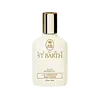What's inside
What's inside
 Key Ingredients
Key Ingredients

No key ingredients
 Benefits
Benefits

 Concerns
Concerns

 Ingredients Side-by-side
Ingredients Side-by-side

Dimethiconol
EmollientSodium Chloride
MaskingSodium Benzoate
MaskingGlycerin
HumectantIsohexadecane
EmollientMagnesium Sulfate
Paraffinum Liquidum
EmollientPolyglyceryl-2 Dipolyhydroxystearate
Skin ConditioningPolyglyceryl-3 Diisostearate
EmulsifyingDisteardimonium Hectorite
StabilisingCyclopentasiloxane
EmollientWater
Skin ConditioningBenzyl Benzoate
AntimicrobialCitronellol
PerfumingGeraniol
PerfumingLimonene
PerfumingLinalool
PerfumingPersea Gratissima Oil
Skin ConditioningHydrogenated Castor Oil
EmollientPentylene Glycol
Skin ConditioningPropylene Carbonate
SolventDimethiconol, Sodium Chloride, Sodium Benzoate, Glycerin, Isohexadecane, Magnesium Sulfate, Paraffinum Liquidum, Polyglyceryl-2 Dipolyhydroxystearate, Polyglyceryl-3 Diisostearate, Disteardimonium Hectorite, Cyclopentasiloxane, Water, Benzyl Benzoate, Citronellol, Geraniol, Limonene, Linalool, Persea Gratissima Oil, Hydrogenated Castor Oil, Pentylene Glycol, Propylene Carbonate
Water
Skin ConditioningParfum
MaskingCetyl Alcohol
EmollientPEG-100 Stearate
Glyceryl Stearate
EmollientPalmitic Acid
EmollientStearic Acid
CleansingDimethicone
EmollientMethylparaben
PreservativeDiazolidinyl Urea
PreservativeAcrylates/C10-30 Alkyl Acrylate Crosspolymer
Emulsion StabilisingSodium Hydroxide
BufferingPropylparaben
PreservativeBHT
AntioxidantDisodium EDTA
Tocopheryl Acetate
AntioxidantAloe Barbadensis Leaf Juice
Skin ConditioningLinalool
PerfumingLimonene
PerfumingHydroxycitronellal
PerfumingBenzyl Alcohol
PerfumingWater, Parfum, Cetyl Alcohol, PEG-100 Stearate, Glyceryl Stearate, Palmitic Acid, Stearic Acid, Dimethicone, Methylparaben, Diazolidinyl Urea, Acrylates/C10-30 Alkyl Acrylate Crosspolymer, Sodium Hydroxide, Propylparaben, BHT, Disodium EDTA, Tocopheryl Acetate, Aloe Barbadensis Leaf Juice, Linalool, Limonene, Hydroxycitronellal, Benzyl Alcohol
 Reviews
Reviews

Ingredients Explained
These ingredients are found in both products.
Ingredients higher up in an ingredient list are typically present in a larger amount.
Limonene is a fragrance that adds scent and taste to a formulation.
It's found in the peel oil of citrus fruits and other plants such as lavender and eucalyptus. The scent of limonene is generally described as "sweet citrus".
Limonene acts as an antioxidant, meaning it helps neutralize free radicals.
When exposed to air, oxidized limonene may sensitize the skin. Because of this, limonene is often avoided by people with sensitive skin.
The term 'fragrance' is not regulated in many countries. In many cases, it is up to the brand to define this term. For instance, many brands choose to label themselves as "fragrance-free" because they are not using synthetic fragrances. However, their products may still contain ingredients such as essential oils that are considered a fragrance.
Learn more about LimoneneLinalool is a fragrance and helps add scent to products. It's derived from common plants such as cinnamon, mint, citrus, and lavender.
Like Limonene, this ingredient oxidizes when exposed to air. Oxidized linalool can cause allergies and skin sensitivity.
This ingredient has a scent that is floral, spicy tropical, and citrus-like.
Learn more about LinaloolWater. It's the most common cosmetic ingredient of all. You'll usually see it at the top of ingredient lists, meaning that it makes up the largest part of the product.
So why is it so popular? Water most often acts as a solvent - this means that it helps dissolve other ingredients into the formulation.
You'll also recognize water as that liquid we all need to stay alive. If you see this, drink a glass of water. Stay hydrated!
Learn more about Water